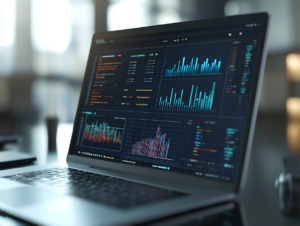Companies that use demand-based pricing see an average revenue increase of 25% compared to those using fixed pricing strategies. Pretty impressive, right?
Your product or service prices adjust based on market demand, customer behavior, and current market conditions with demand-based pricing. This approach helps you earn more revenue by setting the right prices at the right time under different circumstances.
A good grasp of demand-based pricing methods can revolutionize your pricing strategy into a profit powerhouse. This complete piece shows you the basics of demand-based pricing with real examples of successful implementation. You’ll discover practical ways to develop and fine-tune your own pricing strategy. The knowledge you gain will help you analyze market data, create pricing algorithms, and measure your bottom line’s growth while handling risks and challenges effectively.
Understanding Demand-Based Pricing Fundamentals
You just need to grasp the core mechanisms of demand-based pricing to optimize your pricing strategy. Let’s look at how these components work together.
Key components of demand-based pricing
Your demand-based pricing strategy depends on three main elements:
- Real-time data collection: Monitor market conditions and customer behavior.
- Dynamic price adjustment: Respond to demand fluctuations promptly.
- Market analysis tools: Analyze trends and predict future demand patterns.
Price elasticity and consumer behavior
Price elasticity shows how your customers react to price changes. A small price change affects sales volume by a lot when demand is elastic. To name just one example, a 1% price increase that causes a 2% drop in quantity demanded shows an elasticity of -2. Your customers are very price-sensitive in this case.
Products with inelastic demand show minimal reaction to price changes. Basic necessities usually have inelastic demand. Customers keep buying these items whatever the moderate price increases.
Market segmentation strategies
Your pricing works better when you group your market by customer traits and behaviors. Each customer segment reacts differently to prices. Business travelers tend to care less about prices than holiday travelers.
You can charge different prices to different market segments based on what they’ll pay. This approach helps maximize your revenue by matching prices to each segment’s value perception and buying power.
Studies prove that good market segmentation leads to better revenue. Companies that use smart segmentation get better at predicting demand and make smarter pricing decisions.
Taking Your Strategy Forward
Get our free business pricing calculator now and start using these demand-based pricing basics in your business strategy.
Implementing Advanced Pricing Analytics
Advanced pricing analytics can revolutionize your pricing strategy from simple demand tracking to sophisticated predictive modeling. Companies that use advanced analytics see profit increases of 3.9% on average. They achieve ROI between 200% and 350% within 12 months.
Data collection and analysis methods
The foundation of pricing analytics begins with detailed data collection from multiple sources. Modern analytics tools process big amounts of data that include historical sales, customer behavior, and market trends. These tools help you spot significant patterns that influence purchasing decisions.
Key metrics to track include:
- Transaction history and sales patterns
- Customer segmentation data
- Competitor pricing information
- Market demand indicators
- Inventory levels
Predictive modeling techniques
Predictive modeling helps you forecast future demand and optimize prices. Machine learning algorithms analyze your historical data to identify patterns and predict how customers respond to price changes. Companies that use AI-powered pricing tools have seen sales increases of 2% to 5%.
Your predictive models should include price elasticity measurements to find optimal price points for different market segments. This helps you mathematically calculate both revenue-maximizing and profit-maximizing prices for each microsegment of your business.
Real-time pricing adjustments
Advanced analytics platforms let you implement automated price adjustments based on live market conditions. This dynamic approach helps you quickly respond to changes in demand, competitor actions, and market trends.
Your live pricing system should factor in multiple variables at once to work well. Research shows retailers using live analytics can improve their margin accuracy by 30%. Success comes from developing clear rules and thresholds that guide automated pricing decisions while you retain control over profitability targets.
Taking Your Strategy Forward
Download our free business pricing calculator to start using these advanced pricing analytics in your business strategy.
Developing a Dynamic Pricing Strategy
A successful pricing strategy based on what customers just need takes good planning and step-by-step implementation. Your success depends on how well you arrange pricing decisions with market changes and business goals.
Setting pricing objectives
Clear pricing objectives that match your overall business strategy should come first. Research shows companies with well-laid-out pricing objectives achieve 23% higher profit margins. Your objectives should balance these key factors:
- Revenue maximization
- Market share growth
- Profit optimization
- Customer retention
Creating pricing rules and thresholds
Your objectives can reshape the scene when turned into useful pricing rules and thresholds. Companies that use structured pricing rules see their pricing accuracy improve by 15%. You might want to think over a framework like this:
| Price Change Trigger | Threshold | Action |
| Demand Spike | >20% increase | Raise price 5-10% |
| Low Inventory | <15% stock | Increase price 15% |
| Competitor Changes | 10% difference | Match within 5% |
Market position and competitive environment should guide your thresholds while you keep profit targets in mind.
Building pricing algorithms
Smart algorithms can adjust prices automatically based on your rules and market conditions. Modern pricing algorithms look at multiple factors:
1. Historical Data Analysis
- Sales patterns
- Seasonal trends
- Customer behavior
2. Immediate Inputs
- Current demand levels
- Competitor pricing
- Inventory status
Companies that use advanced pricing algorithms see 7.5% higher average order values. Your algorithm should mix automated responses with manual oversight. This ensures pricing decisions match your broader business strategy.
Take Your Pricing to the Next Level
Download our free business pricing calculator to start implementing these strategies in your business today.
A successful price strategy based on demand just needs solid performance tracking and regular fine-tuning. Your success depends on knowing how to track, analyze and adjust pricing strategies.
Key performance indicators (KPIs)
Your price tracking should target specific metrics that directly affect revenue. Room unavailability paired with dynamic pricing can increase revenue by 8.6%. These vital KPIs deserve your attention:
| Metric Category | Key Indicators |
| Revenue | RevPAR, Average Order Value |
| Volume | Conversion Rate, Sales Volume |
| Profitability | Gross Margin, Operating Margin |
Customer reviews play a vital role in success. Each point increase in average review rating associates with a 17.69% boost in revenue performance.
A/B testing methodologies
Your pricing strategy needs systematic A/B testing to work better. A solid testing approach includes:
- Clear test objectives and timeframes
- Statistically significant sample sizes
- Control groups to compare accurately
Revenue measurement matters more than conversion rates in price tests. Weekend tests work better because customers respond more to price changes then.
Revenue impact analysis
Look at both immediate and future effects of pricing changes on revenue. Research proves that flexible pricing boosts hotel revenues. Moving from the 1st to 3rd quartile of price variation results in a 3.07% revenue increase.
Price changes and demand patterns have a close relationship. Smart price adjustments during peak times bring substantially higher returns than fixed pricing.
Managing Risks and Challenges
Price changes based on demand can bring great benefits, but you need solid planning and execution to handle the challenges. Studies show that 67% of customers don’t like frequent price changes, so dealing with these challenges the right way is vital.
Customer perception management
The way customers accept your pricing determines your success. Research shows that room rate differences between weeks of stay and room types make prices seem less fair. Here’s how you can keep your customers’ trust:
| Challenge | Mitigation Strategy |
| Price Fairness | Communicate value clearly |
| Transparency | Explain pricing factors |
| Trust Building | Maintain consistent policies |
Studies show that customers don’t mind price changes as much during booking periods compared to other times. You can use this knowledge to adjust your prices in line with what customers expect.
Competition response strategies
The way your competitors react to your price changes can affect the market by a lot. Here’s how to keep your edge without starting price wars:
- Keep track of your competitors’ pricing moves
- Create plans for different competitive situations
- Set clear limits for price changes
Studies show that businesses need good infrastructure and training to make dynamic pricing work. This investment helps you keep up with trends while staying profitable.
Technical implementation issues
Technical problems can make or break your demand-based pricing approach. Evidence shows that bad data leads to wrong price decisions that hurt your business. Here are the key technical areas to focus on:
- Data Integration: Make sure your pricing systems connect smoothly with existing platforms
- Quality Control: Put in place reliable data checking processes
- Automation Balance: Strike the right balance between automated and manual pricing decisions
Research shows that adding AI-driven dynamic pricing to existing systems needs careful planning. Your technical setup must handle up-to-the-minute price changes while staying accurate and reliable.
Future-Proofing Your Pricing Strategy
The future of pricing demands a strategic mix of technology adoption and market awareness. CEOs overwhelmingly agree – 85% believe AI will substantially change their pricing approaches within five years.
Your future pricing strategy must accept new ideas in technology while building customer trust. Companies using AI-driven pricing solutions have grown their revenue by 20% annually. These vital elements will help you remain competitive:
| Technology Component | Strategic Value |
| Predictive Analytics | Forecast demand patterns |
| Live Monitoring | Respond to market changes |
| Automated Adjustments | Optimize pricing efficiency |
- Evidence-based decision making
- Customer-centric approach
- Ethical pricing practices
- Transparent communication
AI and machine learning integration in your pricing strategy has become essential. Companies that use sophisticated pricing algorithms have boosted their profits by up to 118%. But success comes from balancing automation with human oversight.
Your pricing strategy must adapt to evolving consumer values. The numbers speak clearly – 74% of Europeans and 71% of Americans will pay more for environmentally beneficial products. This pattern indicates that eco-friendly and ethical pricing practices will play a bigger role in keeping customers loyal.
Clear communication about pricing factors can build trust and ease customer concerns when you implement dynamic pricing. This becomes vital as 80% of businesses need frequent adjustments due to economic changes.
Subscription-based models and tailored pricing create new ways to optimize revenue. Businesses that adopt subscription pricing models see their revenue grow by 20% yearly. You should add these elements to your strategy while staying flexible to market shifts.
A soaring win in future pricing strategies depends on strong analytics capabilities. Companies that use advanced analytics and AI tools have improved their margin accuracy by 30%. Your technology investments should focus on scalable solutions that maintain pricing accuracy as your business grows.
Take Your Pricing to the Next Level
Download our free business pricing calculator to start implementing these future-proof strategies in your business today.











